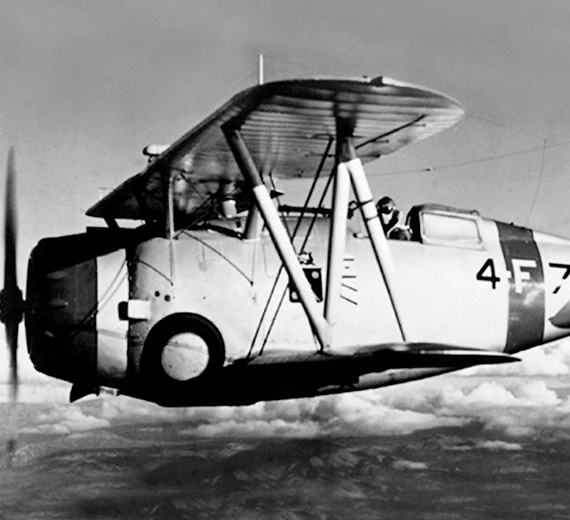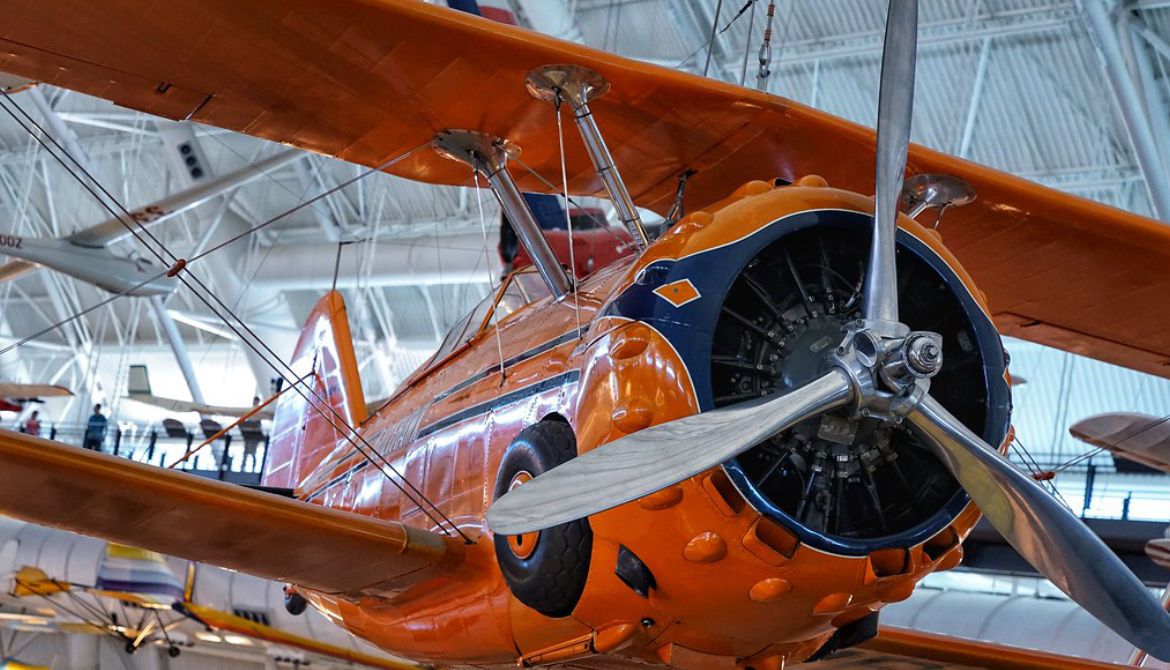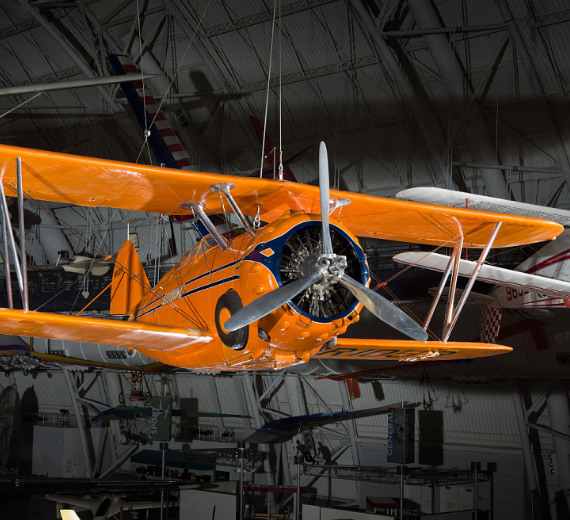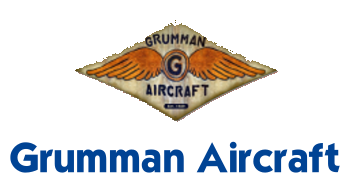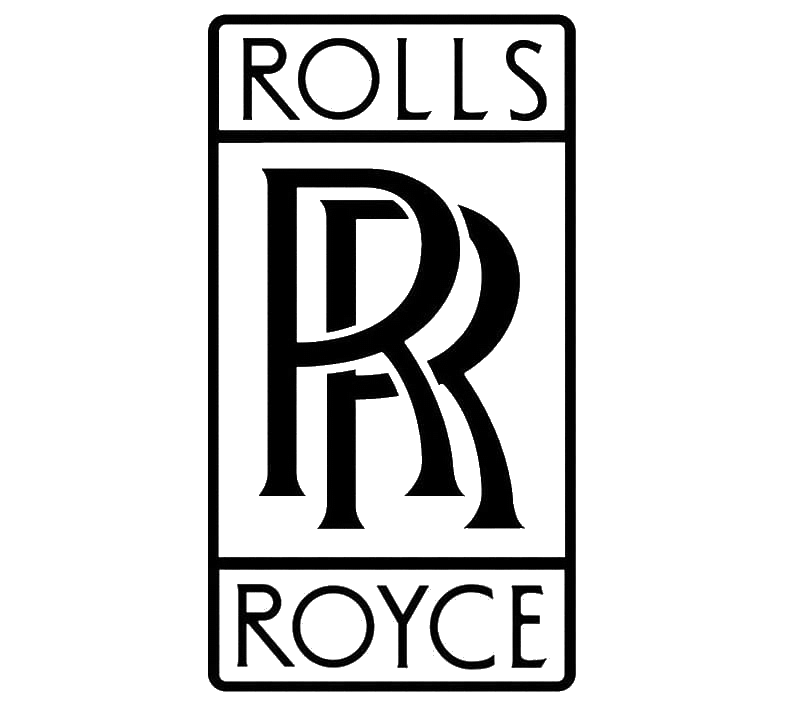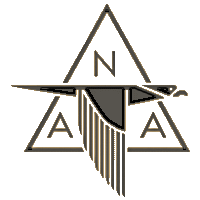Grumman Aerospace
F3F-2 Gulfhawk
Role Fighter aircraft
National origin United States
Manufacturer Grumman
Designer Leroy Grumman
First flight 20 March 1935
Introduction 1936
Retired November 1943
Primary users United States Navy
United States Marine Corps
Produced 1936–1939
Number built 147
Developed from Grumman F2F
.
History Grumm![]() an Aerospace
an Aerospace
Grumman F3F-2 Gulfhawk
The Navy's experience with the F2F revealed issues with stability and unfavorable spin characteristics, prompting the 15 October 1934 contract for the improved XF3F-1, placed before F2F deliveries began. The contract also required a capability for ground attack, in addition to the design's fighter role. Powered by the same Pratt & Whitney R-1535-72 Twin Wasp Junior engine as the F2F, the fuselage was lengthened and wing area increased over the earlier design. A reduction in wheel diameter allowed greater fuselage streamlining, eliminating the prominent bulge behind the cowling of the F2F.
The first production F3F-1 (BuNo 0211) was delivered on 29 January 1936 to the test group at Naval Air Station Anacostia, with squadron service beginning in March to VF-5B of Ranger and VF-6B of Saratoga. Marine squadron VF-4M received the last six in January 1937. Grumman, wanting to take advantage of the powerful new 950 hp (708 kW) Wright R-1820 supercharged radial engine, began work on the F3F-2 without a contract; the order for 81 aircraft was not placed until 25 July 1936, two days before the type's first flight] The engine's larger diameter changed the cowling's appearance, making the aircraft look even more like a barrel, though top speed increased to 255 mph (410 km/h) at 12,000 ft (3,658 m)0
KmCeiling
0
KmRange
0
Km/HAircraft Speed
0
Max Crew
Photo Gallery
Grumman F3F-2 Gulfhawk


Grumman Aerospace Corporation
Grumman F3F Gulfhawk
"The Flying Barrel"
General characteristics
- Crew: one pilot
- Length: 23 ft 2 in (7.06 m)
- Wingspan: 32 ft 0 in (9.75 m)
- Height: 9 ft 4 in (2.84 m)
-
Powerplant
- Wing area: 260 sq ft (24.15 m2)
- Empty weight: 3,285 lb (1,490 kg)
- Max takeoff weight: (2,175 kg)
- Powerplant: 1 × Wright R-1820-22 "Cyclone" 9-cylinder radial engine, 950 hp (710 kW)
Specifications
- Maximum speed: 264 mph (425 km/h, 229 kn) at (4,658 m)
- Cruise speed: (240 km/h, 130 kn)
- Range: 980 mi (1,600 km,
- Service ceiling: (10,120 m)
- Rate of climb: 2,800 ft/min (14 m/s) at sea level
Armament
-
- Guns:
- 1× 0.30 in (7.62 mm) M1919 machine gun, 500 rounds (left)
- 1× 0.50 in (12.7 mm) M2 machine gun, 200 rounds (right)
- Bombs: 2× 116 lb (52.6 kg) Mk IV bombs, one under each wing
-
- Guns:
-
Links to Youtube & Others
With the introduction of the Brewster F2A-1, the Navy's biplane fighter days were numbered. All F3Fs were withdrawn from squadron service by the end of 1941, though 117 were assigned to naval bases (Mainly NAS Miami and NAS Corpus Christi) and used for training and utility duties until December 1943.
Grumman F3F Gulfhawk
The first production F3F-1 (BuNo 0211) was delivered on 29 January 1936 to the test group at Naval Air Station Anacostia.
Youtube Link
A civilian aerobatic two-seat variant, the G-22A "Gulfhawk II," was constructed in 1936 and flown by Major Alfred "Al" Williams, head of Gulf Oil's aviation department.

